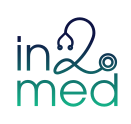Autonomic System Drugs
Nicotinic Agents
Nicotinic receptors are present both at the autonomic ganglia and at the neuromuscular junction (NMJ).
NMJ blockers (muscle relaxants) are either non-depolarising, which work by directly blocking the receptor or depolarising, which provide persistent stimulation to prevent stimulation of contraction by acetylcholine.

Ganglion Blockers – Trimethaphan, mecamylamine
These are competitive antagonists which act at both the sympathetic and parasympathetic ganglia.
They are rarely used except to lower blood pressure in a hypertensive emergency.
Depolarising blockers – Succinylcholine/Suxamethonium
This is a depolarising muscle relaxant which has a very short duration of action.
It is used in short surgeries to induce and to aide intubation.
Side effects
Bradycardia
Increased ocular pressure
Hyperkalaemia – due to loss of tissue potassium during depolarization
Malignant hyperthermia
This is rapid increase in muscle metabolism (seen with gas anaesthetics)
Suxamethonium apnoea
This occurs in people who are slow to breakdown the drug. It leads to prolonged inhibition of the NMJ
Patients wake up from anaesthesia but their respiratory muscles are paralysed
It is a potential emergency as they cannot breathe, so they must be re-intubated.
Non-Depolarising Blockers – Atracurium, vecuronium
They are used in surgery and electroconvulsive therapy to induce muscle relaxation.
Side effects
Histamine release – hypotension, increased heart rate, bronchospasm
Muscarinic Agonists
Methacholine
Methyl-acetylcholine which gives it selectivity to muscarinic receptors
Bethanecol
This is used to stimulate detrusor muscle activity to prevent urine retention
Pilocarpine
Used to treat open-angle glaucoma as contracts ciliary muscle to improve drainage of aqueous humour, lowering ocular pressure.
Cevimeline
Used to treat Sjogren syndrome, as it increases salivation.
Side effects
Vomiting
Salivation
Sweating
Bronchoconstriction
Low BP
Muscarinic Antagonists
Atropine
This is used to treat bradycardia in myocardial infarction and to block side effects of cholinergic excess (e.g. overdose of AChE inhibitor)
Scopolamine
This prevents motion sickness by blocking muscarinic receptors in vestibulum and also used as an anti-spasmodic in the gut (Buscopan)
Ipratropium/Tiotropium
These are used in inhalers to produce bronchodilation
Tropicamide
This is used in the eye to produce mydriasis (dilation) before ophthalmic exam
Darifenacin
This is an M3 selective antagonist used to relax detrusor muscle to treat stress incontinence
Side effects
Mydriasis
Dry eyes
Tachycardia
Urine retention
High temperature
Phosphodiesterase inhibitors
These are indirect parasympathomimetic agents which prolong the action of ACh at the synaptic cleft. They are split into short, medium and long acting.

Short-acting inhibitors – Edrophonium, donepezil, galantamine
These bind non-covalently to inhibit the enzyme, but they have a very short half-life.
Donepezil is used in Alzheimer’s disease.
Edrophonium can be used to diagnose myasthenia gravis – a positive result is if the patient feels improvement in muscular function after injection.
Medium-acting inhibitors – Rivastigmine, Neostigmine
These transfer a carbamoyl group to AChE which takes longer to hydrolase, prolonging action
They are used to treat Alzheimer’s disease and myasthenia gravis
Long-acting inhibitors – Ecothiopate, isoflurophate
These are organophosphates that irreversibly inhibit AChE, leading to a very long duration of action
Side effects
Excessive salivation
Pupil constriction
Urination
Respiratory failure
To reverse the side effects, give Pralidoxime which removes the phosphate group reactivating AChE
ADRENERGIC DRUGS
Sympathomimetics
The direct agonists are split into alpha and beta-agonists which are subdivided into receptor subtypes
Direct agonists
Non-selective Alpha agonist – Methoxamine
This is used as a nasal decongestant.
A1-agonists – Phenylephrine, oxymetazoline
These are used for Nasal decongestants
A2-agonists – Clonidine
This is used as an anti-hypertensive.
B1-agonists – Dobutamine
These are used as positive inotropes in cardiogenic shock.
B2-agonists – Salbutamol, salmeterol
These are used for bronchodilated in asthma.
B3-agonist – Mirabegron
This relaxes the detrusor muscle in the bladder to increase capacity in urge incontinence.
Indirect agonists
Amphetamines – Amphetamine, modafinil
These are transported into nerve terminals and exchanged with NA in the vesicle.
The noradrenaline then leaks out of the nerve terminal leading to indirect stimulation.
They are used to treat ADHD and narcolepsy, and they also have a side effect of reducing appetite.
Adrenergic Antagonists
These can be divided into alpha and beta receptor antagonists. The beta-blockers are used in the cardiovascular system (anti-dysrhythmics + anti-hypertensive) and eye to reduce intraocular pressure.
Non-specific alpha blockers – Phentolamine, phenoxybenzamine
These drugs reduce peripheral resistance and blood pressure.
They are used to treat pheochromocytoma before surgery as this can lead to massive catecholamine release into the blood.
They are not used to treat hypertension as they lower blood pressure so much they cause a reflex tachycardia
Side effects
Postural hypotension
Tachycardia
Alpha-1 inhibitors – Prazosin, Terazosin
These are specific inhibitors of the a1 receptor and cause vasodilation decreasing peripheral resistance and BP.
They are used to treat hypertension and urinary obstruction due to prostatic hypertrophy
Tamsulosin and Silodosin are preferred for urinary obstruction as they are selective for a1A receptors.
Side effects
Postural hypotension but no reflex tachycardia
Disulfiram
This inhibits the conversion of dopamine to noradrenaline
It is used to treat alcoholism as it inhibits alcohol dehydrogenase, which means that any effects of a hangover are felt as soon as you drink alcohol.
Disclaimer



